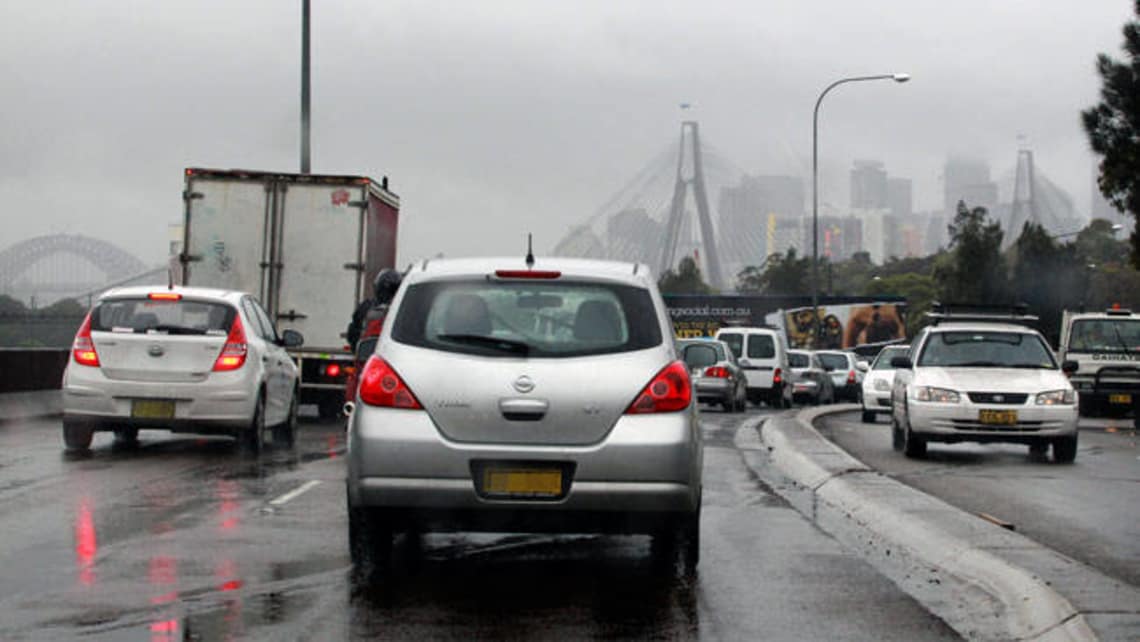
Emissions and pollution down

By buying smaller and greener cars, Aussie motorists are on track to hit a national CO2 target set during the 2010 election campaign, following another 2.8 per cent reduction in pollution during 2011.
The national average fell to 206.6 grams for every kilometre travelled last year, well down on the 252.4-gram average a decade ago and closing on the 190 grams/kilometre target set for 2015. The payoff for drivers is a fuel economy improvement that mirrors reduction of CO2 gas.
"We'll get to 190 well ahead of the government's information election campaign commitment. We are going to get there a long time before 2015," the chief executive of the Federal Chamber of Automotive Industries, Ian Chalmers, said.
"We would have done it whether she was elected or not. The automotive industry is committed to reductions in emissions, regardless of which party is in government. That's the important issue."
Chalmers said the accelerating move to smaller vehicles, and smaller engines in most size classes, was helping to drive the greening of Australia's fleet.
"There is no doubt that what's driving this is that people are choosing, in increasing numbers, smaller and more fuel efficient cars. This also has a pay-off in fuel economy," he said.
| Year | CO2/km | Reduction |
| 2002 | 252.4 | # |
| 2003 | 249.5 | 1.1% |
| 2004 | 246.5 | 1.2% |
| 2005 | 240.7 | 2.3% |
| 2006 | 230.3 | 4.3% |
| 2007 | 226.1 | 1.8% |
| 2008 | 222.4 | 1.6% |
| 2009 | 218.6 | 1.7% |
| 2010 | 212.6 | 2.7% |
| 2011 | 206.6 | 2.8% |
The 2011 figures, which are weighted for the size of the Australian carpark, show cars led the CO2 improvement with a 4.5 per cent drop last year, as Toyota Camry-sized medium cars did the best with a 6.1 per cent improvement, although both passenger SUVs and trucks also recorded a fall.
The only area to record an increase last year was upper large cars, described by Chalmers as "Maybach-type" ultra-luxury cars.
"What's also happening, right across the whole vehicle fleet, is steady, inexorable progress towards lower emissions and fuel economy. Almost every vehicle now is coming with reduced fuel economy. There is also increasing take-up of diesel as an engine option. In the past it was really reserved for heavy vehicles and trucks, not cars that mums and dads would drive."
| PASSENGER CARS | 2010 (CO2 g/km) | 2011 (CO2 g/km) | Variance +/- % |
| Light | 156.9 | 151.5 | -3.4 |
| Small | 180.6 | 177.5 | -1.7 |
| Medium | 199.6 | 187.5 | -6.1 |
| Large | 252.4 | 241.9 | -4.2 |
| Upper large | 278.2 | 279.7 | 0.6 |
| People movers | 249.5 | 243.4 | -2.4 |
| Sports | 205.7 | 196.9 | -4.3 |
| TOTAL | 192.5 | 183.9 | -4.5 |
| SPORTS UTILITY VEHICLES | |||
| Compact | 222.3 | 215.4 | -3.1 |
| Medium | 253.5 | 247.5 | -2.4 |
| Large | 292.7 | 290.2 | -0.8 |
| Luxury | 231.5 | 220.5 | -4.7 |
| TOTAL | 238 | 230.4 | -3.2 |
| LIGHT COMMERCIAL VEHICLES | |||
| Light buses | 268.6 | 263.1 | -2.1 |
| Vans | 230.9 | 225.4 | -2.4 |
| PU/CC 4x2 | 259.8 | 253.3 | -2.5 |
| PU/CC 4x4 | 247.8 | 244.3 | -1.4 |
| Trucks 2.5-3.5 GVM | 257.8 | 257.6 | -0.1 |
| TOTAL | 250 | 245.0 | -2.0 |
| TOTAL | 212.6 | 206.6 | -2.8 |










Comments